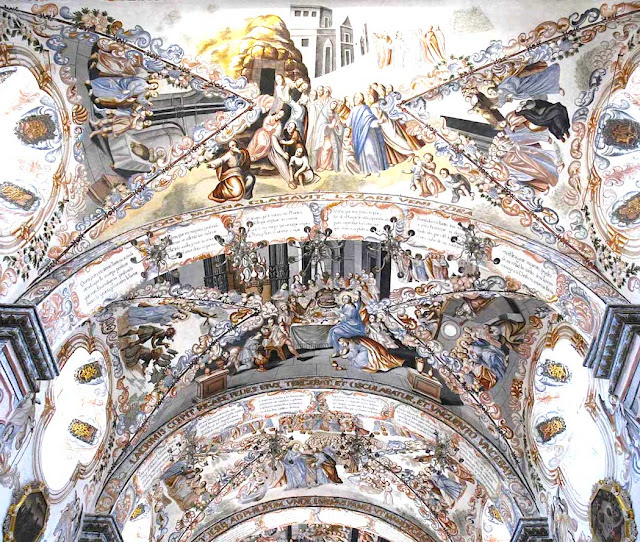In our previous post we described the Last Judgment murals at El Llanito. Here we look at the frescoes in the Loreto Chapel adjacent to the church, also attributed to native artist Miguel Antonio Martínez de Pocasangre.
 |
| The Loreto Chapel, wall one |
The Loreto Chapel
The tiny Loreto chapel, or chapel of the Litany, is a late 18th century addition to the church. Currently under restoration, the murals decorating the chapel walls and ceiling are the best preserved of the Pocasangre works at El Llanito. In contrast to the disturbing Last Judgment scenes of the portería, the principal subject of the mural program here is the Litany of the Virgin—a devotional theme we saw portrayed in the painted ceilings of Michoacán (e.g.: at Zacán, Quinceo and San Lorenzo).
 |
| The Loreto Chapel, wall two |


Gate of Heaven; Cause of Our Joy;
The wall frescoes depict verses adapted from a widely circulated, illustrated edition of the Litany of Loreto (Klauber, Augsburg 1750), each framed by linked cartouches with the accompanying Latin text.
 |
| Loreto Chapel ceiling detail |
As at Atotonilco, the scenes are rendered in a popular baroque style, albeit framed in a more orthodox manner. Reds and blues predominate, enhanced by washes of earth tones.
text © 2017 Richard D. Perry
color photography courtesy of Robert Jackson and others



































